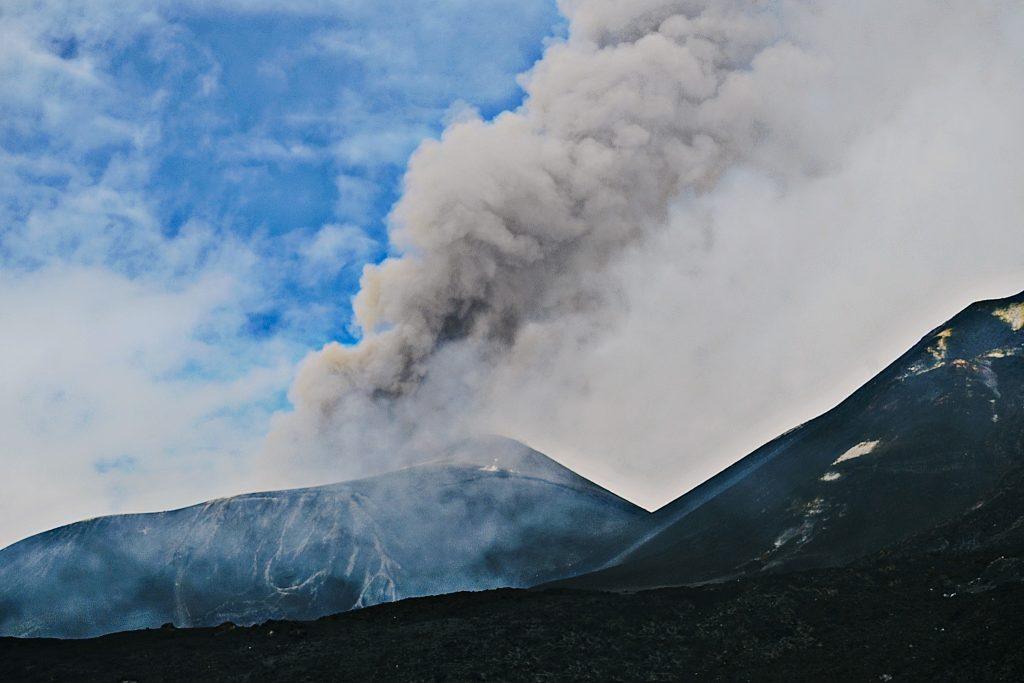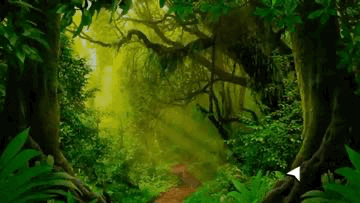At the southern tip of Italy, in Sicily, Mount Etna dominates the horizon. This active stratovolcano fascinates as much as it unsettles. Its lava flows, fiery fountains, and ash clouds have long shaped local life. At the foot of this giant, Catania reflects the close bond between the volcano’s destructive power and the faith of its inhabitants, particularly around the Cathedral of Saint Agatha. Together, they weave a unique story where nature, culture, and spirituality intertwine.
Article by Damien Lafon in collaboration with Léane Vennin Photographs by Léane Vennin.
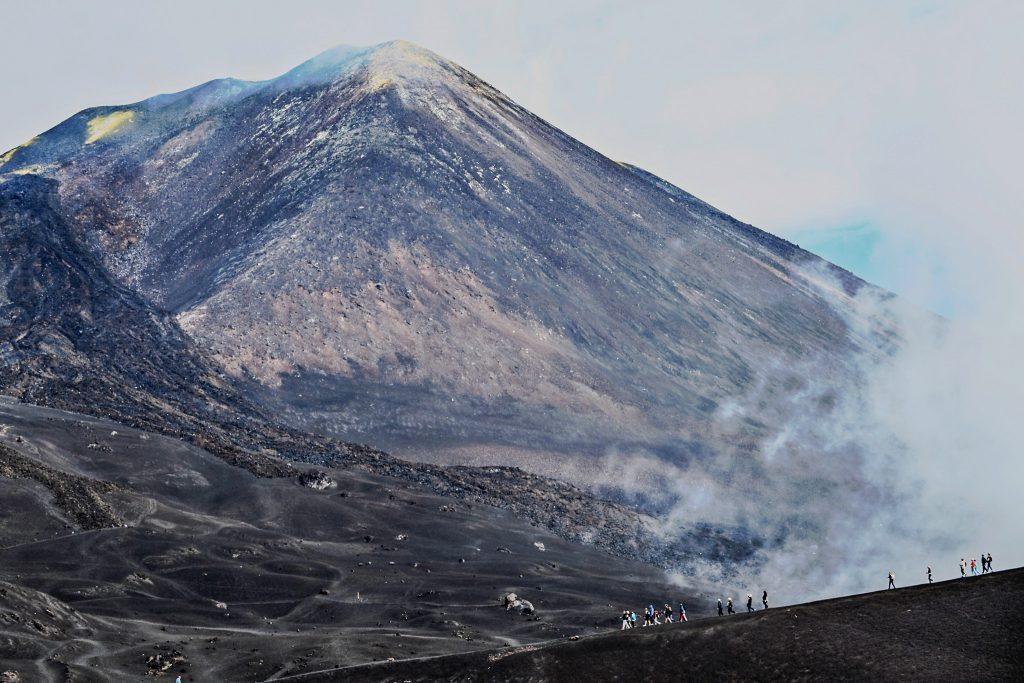
Etna, a Stratovolcano with Many Faces
Located on Sicily’s eastern coast, Etna is the most active volcano in Europe. Rising above 3,300 meters, its five main craters reveal its instability. Effusive eruptions release incandescent lava, reshaping the landscape. Explosive phases, such as those in the summer of 2025, hurl ash and rocks into the sky. These spectacular events highlight the duality of a volcano capable of both destruction and fertility.
Mount Etna and the Fertility of the Land
Beneath its threatening presence, Etna provides rich and fertile soil. Its volcanic ash nourishes vineyards, citrus groves, olive trees, and pistachio orchards. For centuries, this abundance has attracted farmers, merchants, and travelers. Today, the vineyards on the southern slopes still draw enthusiasts of renowned mineral wines. The volcano remains a constant threat, yet it also stands as a cornerstone of the local economy.
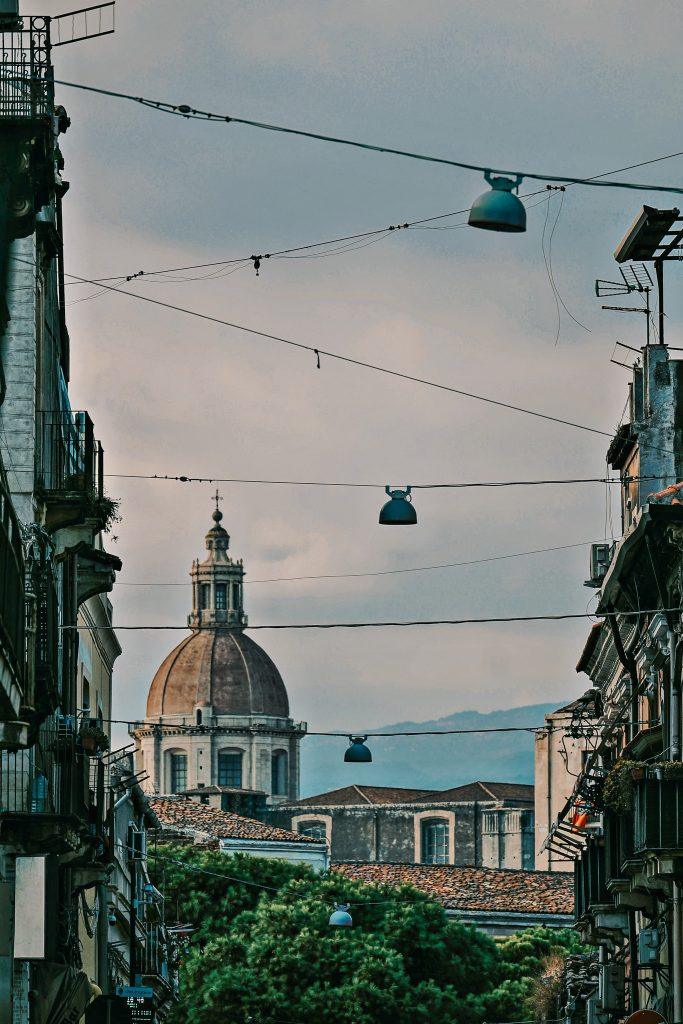
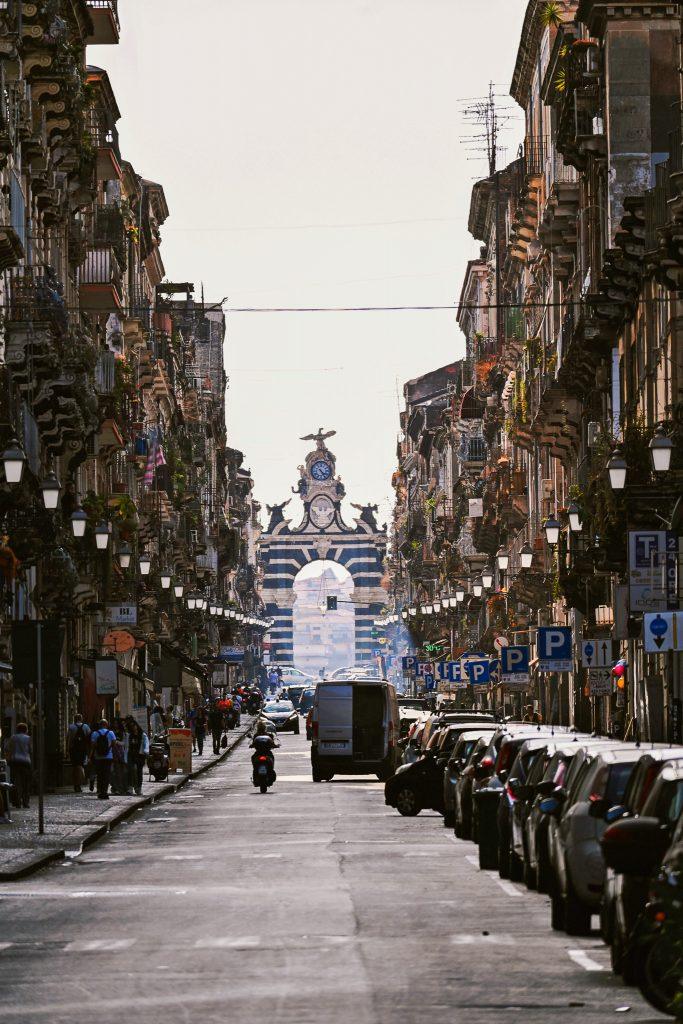
Did you know?
Recent lava flows have left still-warm formations. Locals sometimes use them as building materials. In Catania, many paved streets are made of basalt directly extracted from Etna.
Catania, a City Forged by Fire
Today, Catania is a city where Etna’s presence is visible at every corner. Rebuilt several times after devastating eruptions and earthquakes, it stands as a symbol of resilience. Its lava-stone monuments, such as Porta Garibaldi, illustrate the deep connection between the inhabitants and their volcano. The contrast between black basalt and pale stone gives the city a distinctive aesthetic, reinforcing its cultural identity.
The Cathedral of Catania and Saint Agatha
At the heart of the city rises the Cathedral of Saint Agatha, a symbol of local faith. Dedicated to Catania’s patron saint, it embodies spiritual protection against Etna’s fury. According to tradition, in 252 AD, an eruption threatened to engulf the city. The inhabitants displayed the saint’s veil, and the lava reportedly stopped, sparing Catania from destruction. Even today, this relic is the focus of annual processions that gather thousands of worshippers.
Did you know?
The Feast of Saint Agatha, celebrated in February, attracts pilgrims from around the world. It is considered one of the largest religious festivals in the Mediterranean.
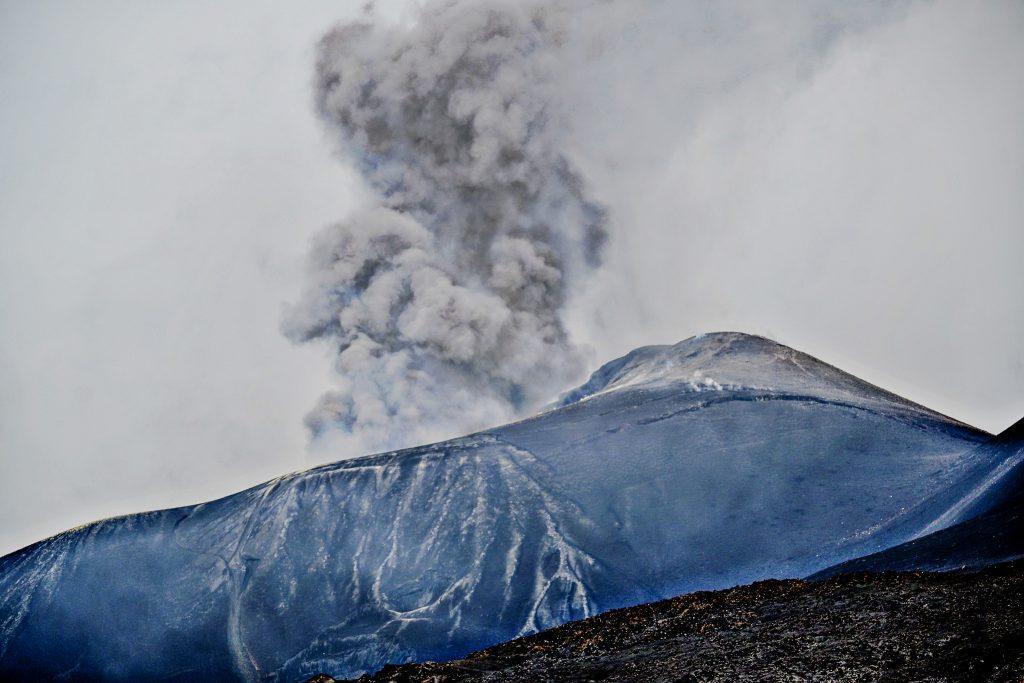
When Mount Etna Becomes a Cultural and Touristic Engine
Beyond its dangers, Etna attracts countless visitors. Hikers climb its slopes to witness its active craters. Photographers capture glowing eruptions lighting up the Sicilian night. In Catania, tourists wander between the cathedral, lively markets, and baroque palaces. This fusion of natural energy and human heritage makes the region a unique place where fire and faith coexist.
An Eternal Coexistence with the Volcano
Etna and Catania share an inseparable destiny. The volcano shapes the land, enriches the soil, and asserts its destructive force. The Cathedral of Saint Agatha reflects the spiritual strength guiding the people through hardship. Nature and faith together nourish a distinctive Sicilian identity, where black stones and ancient legends mingle with the bright landscapes of the Mediterranean. Visiting here means understanding how humans and volcano coexist, in a fragile yet fascinating balance.
Follow us on Instagram and Facebook to keep up to date and support our media at www.helloasso.com
This article may interest you : Ijen, the reverse side of the crater
